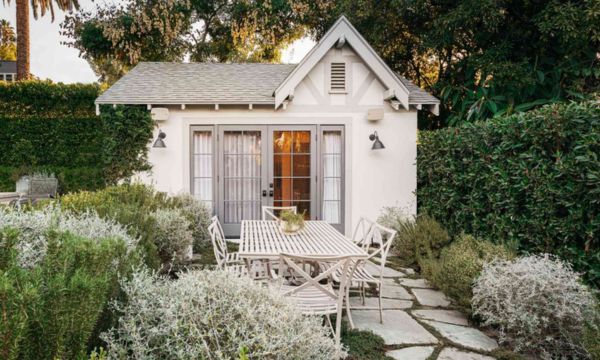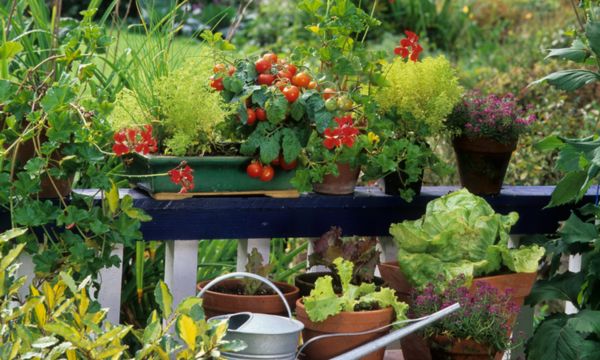Growing Up: Vertical Gardening Tips for Tiny House Dwellers
Living in a tiny house presents residents with special challenges, especially when it comes to maintaining gardens. Even if you’re short on space, that doesn’t mean you have to give up on your green goals. Vertical gardening is a smart and space-saving method that allows you to create a thriving garden with a smaller footprint than traditional gardening. Vertical gardening should be embraced. In this article, we’ll discuss the art of vertical gardening and give you some handy tips to help you turn the smallest area into a green oasis full of lush greenery.
What Exactly does “Vertical Gardening” mean?
The method of using vertical structures such as walls and trellises to make plants grow upright is called vertical gardening, which is an ingenious and advanced gardening method. People who live in compact houses and want to make the most of the available space and at the same time want to bring more greenery and beauty into their surroundings find this an ideal solution.
Benefits of Growing Plants Vertically:
Free Space Optimization
Vertical gardening makes the most efficient use of the space you have, allowing you to grow a variety of plants in even the smallest of spaces.
Aesthetic Progress
Vertical gardens produce stunning visuals that transform a boring wall into a colorful work of art.
Improved Usability for Users
Having plants that grow vertically makes it easier to care for them without bending over or kneeling, making gardening much easier and more comfortable.
Improved Air Circulation
Vertical gardens improve airflow around the plants, reducing the chance of the plants becoming infected with disease or pests.
Vertical Gardening Tips for Those who Live in Tiny Homes:
1. Select the Appropriate Organization Settings
Determine the best vertical structure for growing your plants based on the amount of space you have available and the types of plants you want to grow. Among the options are:
- Flower pot on the wall.
- Use of gazebos and pergolas.
- Hanging vases or baskets from the ceiling.
- Shelves with levels or plant stands with levels.
2. Determine the Amount of Exposure to Sunlight
Become familiar with the solar patterns that can affect your small home. When deciding where to place your vertical garden, consider the plant’s exposure to both direct and indirect light so that it receives adequate sunlight.
3. Choose the Right Vegetation
Choose plants that can survive the existing temperature range and sun exposure. The compact and trailing plants are perfect for vertical gardening.
- Herbs such as basil, mint and thyme are examples.
- Leafy greens, such as spinach and lettuce
- Examples are succulents and climbing plants such as pothos and ivy.
4. Notes on Soil and Watering
To avoid problems with waterlogging, choose high-quality, well-drained soil. If you want to efficiently water your vertical garden, you should consider a drip irrigation system or self-watering planters.
5. Make Sure there is Enough Space between the Plants
Give your plants plenty of room to expand and avoid overcrowding. Sufficient distance between buildings and other structures improves air circulation and reduces the risk of illness.
6. Provide Creeper Guidance
Use soft ties or twine to guide climbing plants, such as tomatoes and cucumbers, along your trellis or posts. Climbing plants need more support than other types of plants.
7. Use Recycled Materials
To design your vertical garden, you have to get a little creative and reuse materials, such as pallets, wooden boxes or old planks.
8. Hang Fruits and Vegetables on the Wall
Create a green wall that is not only useful and beautiful, but also supplies you with fresh produce by growing edible herbs and greenery in your vertical garden.
9. Rotate and Replace Plants in Your Garden
Rotating the plants in your vertical garden regularly and replacing spent plants will keep the plant looking attractive and prevent loss of nutrients.
10. Complete the Color Palette with Fresh Flowers
Plant colorful flowering plants such as nasturtiums or petunias in your vertical garden to add some color to the space.
Conclusion:
Vertical gardening is a great option for people who live in a compact home but still want to enjoy gardening despite the limited space. If you’re willing to embrace vertical growth, you can create a green and diverse garden outside your humble home. So unleash your creative potential and turn your vertical space into a green paradise.
FAQs:
1. Can I grow vegetables in a vertical garden?
Yes, you can grow a variety of vegetables in a vertical garden, including tomatoes, cucumbers, beans, and leafy greens.
2. Do vertical gardens require more maintenance than traditional gardens?
Vertical gardens may need more frequent watering due to their vertical orientation, but they don’t necessarily require more maintenance. Proper planning and irrigation systems can help manage maintenance efficiently.
3. What are the best plants for vertical gardening beginners?
Beginner-friendly plants include herbs such as pothos, spider plant, mint, and basil, and succulents such as aloe vera.
4. Can I create a vertical garden in a tiny house?
Absolute! You can create a vertical indoor garden with wall-mounted planters, hanging pots or a vertical shelving system.
5. How can I make my vertical garden environmentally friendly?
Use organic soil and fertilizers, collect rainwater for irrigation, and consider composting to reduce waste and promote environmentally friendly gardening practices.
Ad Nowadays our smartphones have become a powerful tool, unlike in the past when they were very […]
More Thriving in Adversity: Tiny House Gardening in Challenging Climates
Thriving in Adversity: Tiny House Gardening in Challenging Climates
Ad Creating life and beauty through tiny home gardening, even in the harshest environments, is a monument […]
More Small Space, Big Harvest: The Joy of Tiny House Vegetable Gardening
Small Space, Big Harvest: The Joy of Tiny House Vegetable Gardening
Ad You don’t have to give up the fun of growing your own veggies just because you’re […]
More